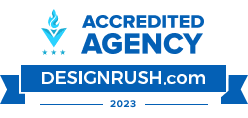Best Practices for Keeping in Touch With Your Alumni

Schools, businesses, non-profits and other organizations need alumni relations programs to help with critical initiatives such as recruiting, fundraising/donations, sales/business development, referrals and general positive branding.
Keeping alumni properly informed and engaged is one of the best ways to help turn alumni into an organization’s most loyal supporters and brand ambassadors, who will often, in turn, provide invaluable word-of-mouth marketing and promotion across their personal and professional networks.
But to turn them into lifelong advocates, you must keep them connected to your organization by reaching out to them regularly and providing them with opportunities to engage with the organization and one another. It can also be beneficial to help make an impact on their professional development and the community at large.
Without accurate alumni data and dedicated resources to maintain this data, you won’t be able to reach your alumni and can miss out on valuable opportunities to develop relationships and grow a stronger support network for your alumni group. As a result, it’s important to continually capture and update contact information for alumni.
Some organizations have thousands of alumni with whom to stay in touch, and their data is constantly changing as alumni move and relocate, change jobs or roles, etc. In fact, researchers have suggested that more than 30% of contact data changes each year. That number may actually now be as high as 50% in the current economic climate with people rapidly changing jobs and locations and working from home.
Accurate alumni data is at the heart of the success of an alumni relations program. Alumni data is important in order to:
- Communication: Accurate alumni data ensures effective communication with alumni. It allows the alumni relations team to reach out to individuals via their preferred channels, such as email, phone or social media. With accurate contact information, the program can send relevant updates, invitations to events, newsletters and fundraising campaigns. This improves alumni engagement and fosters a strong relationship between the institution and alumni.
- Personalization: Accurate data enables personalized interactions with alumni. By understanding alumni interests, careers and involvement with the institution, the program can tailor communications and offerings to specific segments of the alumni population. Personalization increases the chances of alumni responding positively to the outreach and participating in events or giving back to the institution.
- Event planning: Alumni events play a vital role in fostering connections among graduates and between alumni and the institution. Accurate data allows for effective event planning and targeted invitations. Knowing the location, industry and other relevant details about alumni helps the program determine the best locations, themes and formats for events, maximizing attendance and engagement.
- Alumni directory: An accurate alumni database serves as a valuable directory for networking purposes. It allows alumni to connect with each other, seek professional opportunitis, or collaborate on various initiatives. Alumni can search for fellow graduates based on criteria like industry, location or areas of expertise, facilitating meaningful connections and strengthening the alumni network.
As we noted, up to 50% of your data degrades each year. Here’s a step-by-step plan to ensure that your alumni data is as clean, correct and complete as possible.
- The first step is to identify locations of key data and identify relevant information to be evaluated.
- The next step is to “assess the mess” to determine the scope and cost of your alumni data quality project so you can properly budget and gauge the time frame.
- Next, dedicate budget and resources to properly cleanse existing data. Begin with automated data cleansing to easily and cost-effectively clean as much data as possible.
- Then hire data stewards to clean the smaller set of data more quickly and at a reduced cost.
- Finally, create a data quality strategy to establish project goals and data management processes to ensure that future data will be entered consistently, properly updated and regularly maintained.
- If your organization doesn’t have the resources and host in-house staff to perform these processes, you can easily and cost-effectively outsource these positions to experienced professionals.
There are a number of ways to tackle an alumni data project utilizing varying resources and methods.
- One of the quickest and most cost-effective ways to improve your alumni data is to reach out to an experienced data quality team that has tools to automatically clean, correct, update and deduplicate your records and enhance the data with missing or additional information that can be valuable for segmentation and targeting. Automated data cleaning is well-suited for cleaning data quickly and inexpensively. However, this methodology will usually only be able to clean a limited set of records, and the results will not be 100 percent accurate, due to the frequent changes in contact data and regular need for ongoing frequent data updates.
- Manual cleanup involves having dedicated data quality professionals or ‘data stewards’ go through your alumni contacts and lists to research, validate, deduplicate, clean and enhance the information. If this work is assigned to in-house staff, the process can be expensive and time-consuming, requiring a great deal of training and supervision. Additionally, because the work is often mundane, it frequently results in a ‘revolving door’ of staff turnover. Many organizations have learned this the hard way and, as a result, prefer to outsource these tasks to experienced data specialists who are trained in data quality and can also help you to establish processes and procedures to improve ongoing data quality in the future.
- Often the best way to clean alumni data in the with the least time and expense can be to combine automated and manual processes. In this hybrid data cleaning model, an automated data cleaning process is implemented first to quickly and cost-effectively clean and enhance as much data as possible. Then manual data cleansing can be performed on a reduced set of remaining records at a significantly lower cost.
Reach out to us to find out how we can help with outsourcing your alumni data needs.







